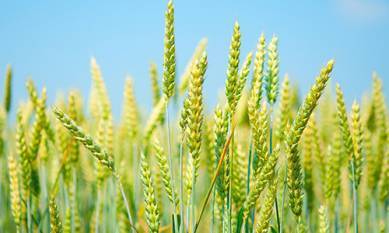NEW DELHI, 2 May 2024: As the monsoon subsides and winter descends upon India, a new wave of agricultural activity begins. Rabi crops, sown in the cooler months and harvested in the spring, contribute significantly to the nation's food security and farmer income.
Let's explore the top Rabi crops, their importance, the states where they thrive, and the role government procurement plays in supporting farmers.
1. Wheat: The Staff of Life in Winter
Wheat emerges as the undisputed king of Rabi crops. This vital cereal is a staple food for a large portion of the Indian population, providing essential carbohydrates and dietary fiber. Major wheat-producing states include Punjab, Haryana, Uttar Pradesh, Madhya Pradesh, and Rajasthan. The government, through the FCI, actively procures wheat at MSP to ensure food security and provide a guaranteed income source for farmers cultivating this crucial crop.
2. Gram (Pulses): A Powerhouse of Protein
Grams, also known as pulses, are a vital source of protein, especially during the winter months. They encompass a variety of legumes like chana (chickpea), masoor (red lentil), and matar (peas). These protein-rich crops not only enrich the soil but also contribute significantly to nutritional security. Major gram-producing states include Madhya Pradesh, Maharashtra, Rajasthan, Uttar Pradesh, and Karnataka. While not procured as extensively as wheat, the government implements schemes to promote gram cultivation and stabilize market prices, benefitting farmers.
3. Mustard: Adding Spice to the Season
Mustard seeds, a Rabi crop, are used to produce mustard oil, a popular cooking oil in India. The pungent aroma and flavor of mustard oil add a distinct character to Indian cuisine. Rajasthan, Madhya Pradesh, Haryana, Uttar Pradesh, and Gujarat are major mustard seed producers. Government procurement of mustard seeds is limited, but initiatives are underway to encourage its cultivation and explore alternative uses for the crop, potentially creating new income avenues for farmers.
4. Barley: A Multifaceted Crop
Barley, a versatile Rabi crop, finds usage in various forms. It is used as a food grain, animal feed, and even for making malt beverages. Major barley-producing states include Rajasthan, Uttar Pradesh, Haryana, Punjab, and Himachal Pradesh. Government procurement of barley is not as prominent as other Rabi crops, but its role in the malting industry and animal feed sector ensures stable demand and income generation for farmers.
5. Oilseeds: A Source of Winter Fats
Oilseeds such as linseed and rapeseed (toria) are important Rabi crops. These seeds are processed into edible oils, a crucial component of the Indian diet during winter months. These oils tend to have higher smoke points, making them suitable for winter cooking. Major oilseed-producing states include Rajasthan, Madhya Pradesh, Uttar Pradesh, Gujarat, and Haryana. While government procurement of these oilseeds is not as extensive as other Rabi crops, efforts are being made to promote their cultivation and support farmers in this sector.
Rabi Crops: Ensuring Winter Abundance
Rabi crops bridge the gap between Kharif harvests and summer months, ensuring a steady supply of essential food items throughout the year. They not only contribute to food security but also provide significant income for farmers.
Government interventions through MSP and procurement schemes, along with initiatives to promote diversification and value addition, play a crucial role in supporting Rabi crop cultivation and enhancing farmer well-being. As India strives for agricultural sustainability and self-sufficiency, continued focus on Rabi crops and farmer income will be paramount.
Image credit: kisaanhelpline.com




















